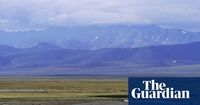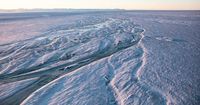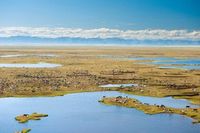On October 23, 2025, the Trump administration reignited a decades-old debate by finalizing plans to open the entire 1.56 million-acre coastal plain of Alaska’s Arctic National Wildlife Refuge (ANWR) to oil and gas leasing. The announcement, made by Secretary of the Interior Doug Burgum during an Alaska Day event, marks a dramatic reversal of the Biden administration’s restrictions and sets the stage for a new era of resource development in one of America’s most pristine and contested wild places.
The decision immediately triggered a flurry of reactions across Alaska and beyond, with supporters hailing the move as a long-overdue boost to the state’s economy, and opponents warning of irreversible harm to wildlife, indigenous cultures, and the global climate. According to the Associated Press, the Trump administration’s plan mandates at least four lease sales within the refuge over a 10-year period, fulfilling campaign promises made by both President Trump and congressional Republicans.
The Arctic National Wildlife Refuge, sprawling across 19.3 million acres in northeast Alaska, is the largest national wildlife refuge in the United States. The 1.56 million-acre coastal plain—often referred to as the “1002 Area”—has long been the focus of fierce debate. Its fragile tundra and wetlands provide critical habitat for caribou, polar bears, grizzly bears, wolves, and more than 200 species of birds, as noted by Nexstar Media. The area is also the calving ground for the Porcupine Caribou herd, which has sustained the Gwich’in people for generations.
For the Gwich’in Nation, the coastal plain is sacred. Leaders from these indigenous communities have consistently opposed drilling, citing the land’s spiritual and cultural importance and its role in sustaining their way of life. Meda DeWitt, Alaska senior manager with The Wilderness Society, summarized the sentiment: “The administration is placing corporate interests above the lives, cultures and spiritual responsibilities of the people whose survival depends on the Porcupine caribou herd, the freedom to live from this land and the health of the Arctic Refuge.”
Not all native voices are united in opposition. The Iñupiaq community of Kaktovik, located within the refuge, supports responsible oil development, viewing it as a key to economic progress. Nathan Gordon Jr., mayor of Kaktovik, stated, “Developing ANWR’s Coastal Plain is vital for Kaktovik’s future. Taxation of development infrastructure in our region funds essential services across the North Slope, including water and sewer systems to clinics, roads, and first responders. Today’s actions by the federal government create the conditions for these services to remain available and for continued progress for our communities.” Charles “CC” Lampe, president of the Kaktovik Iñupiat Corporation, echoed this, saying, “It is encouraging to see decisionmakers in Washington advancing policies that respect our voice and support Kaktovik’s long term success.”
The administration’s move reverses the Biden-era moratorium and lease cancellations. A federal judge had ruled in March 2025 that the Biden administration lacked authority to cancel leases held by the Alaska Industrial Development and Export Authority (AIDEA), a state-sponsored corporation. The Department of the Interior reaffirmed these leases, which cover about 370,000 acres of the coastal plain, and announced plans for a new lease sale in winter 2025, as reported by Eos and Earthjustice.
However, enthusiasm from the oil and gas industry has been muted. Previous lease sales have dramatically underperformed expectations. The 2021 sale, held at the end of Trump’s first term, generated just $14.4 million in bids—far short of the $1.8 billion initially projected. In January 2025, a subsequent lease sale attracted zero bidders, a fact attributed to environmental concerns, high costs, and the lack of infrastructure such as roads and facilities. Major banks have also refused to finance drilling in the region, citing environmental and reputational risks.
Beyond drilling, the Trump administration’s October 23 announcement included the final approval of two other contentious projects: the Ambler Road and the Izembek Road. The Ambler Road would open access to valuable deposits of copper, cobalt, gallium, and germanium in northwestern Alaska. Despite being described by the White House as “in the public interest” for securing domestic critical minerals, the project has faced stiff opposition from 88 Alaska Native Tribes and First Nations, who warn of harm to wildlife and traditional lands.
The Izembek Road, an 11-mile, one-lane gravel road, will cut through the Izembek National Wildlife Refuge to connect the remote community of King Cove to the all-weather airport at Cold Bay. Supporters, including Alaska Governor Mike Dunleavy and Senator Lisa Murkowski, argue that the road is vital for medical evacuations and community safety. Murkowski emphasized, “I think it’s important to remember that nobody’s talking about a multi-lane paved road moving lots of big trucks back and forth. It is still an 11-mile, one-lane, gravel, noncommercial-use road.”
Yet, conservationists and some tribal leaders remain deeply concerned. The Center for Biological Diversity described the land exchange as trading about 500 acres of “ecologically irreplaceable wilderness lands” within the refuge for up to 1,739 acres of King Cove Corporation lands outside the refuge. Chief Edgar Tall Sr. of the Native Village of Hooper Bay voiced fears for the migratory birds that his community depends on: “We need the brant and emperor geese because they’re nutritious and fatty from feeding in Izembek. … If the birds disappear because of the Izembek road, our community could disappear too.”
Environmental groups, including Earthjustice, have vowed to challenge the new drilling and road projects in court. Erik Grafe, an attorney with Earthjustice, issued a stark warning: “Expanding oil drilling in the Arctic threatens irreplaceable wildlife and cultural traditions that exist nowhere else in the world. It worsens the climate crisis and undermines energy security by seeking to lock in reliance on fossil fuels. The Gwich’in people, most Americans, and even major banks and insurance companies know the Arctic Refuge is no place to drill.”
Climate scientists are also sounding alarms. The Arctic is warming three to five times faster than the rest of the planet, amplifying the risks of thawing permafrost, sea ice loss, and coastal erosion. These changes threaten Alaska’s infrastructure and communities, sometimes forcing entire villages to relocate. Critics argue that the government has not adequately factored these economic and environmental costs into its decision-making.
As the Trump administration accelerates its push to develop Alaska’s resources, the battle over ANWR and related projects is far from over. Legal challenges loom, and the upcoming lease sale will reveal whether industry interest can overcome the region’s logistical and financial hurdles. For now, the fate of one of America’s last great wildernesses hangs in the balance, with local communities, wildlife, and the global climate all poised to feel the impact.


